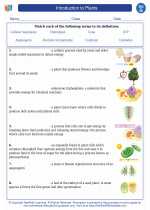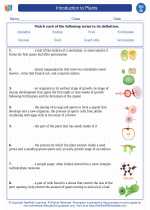Silicate Minerals
Silicate minerals are the most abundant minerals in the Earth's crust and are composed of silicon and oxygen, often combined with other elements such as aluminum, iron, magnesium, potassium, and calcium. Silicate minerals make up approximately 90% of the Earth's crust.
Chemical Composition
Silicate minerals are characterized by their chemical structure, which consists of silicon-oxygen tetrahedra (SiO4) forming the building blocks of the minerals. These tetrahedra can be isolated, connected in chains, or arranged in sheets or three-dimensional frameworks, giving rise to a wide variety of silicate mineral structures.
Classification
Silicate minerals can be classified into several groups based on their structural arrangement. The major groups of silicate minerals include:
- Framework Silicates: These minerals have a three-dimensional framework of silicate tetrahedra, such as quartz and feldspar.
- Sheet Silicates: Minerals in this group have a structure consisting of continuous flat sheets of silicon-oxygen tetrahedra, like mica and clay minerals.
- Chain Silicates: These minerals are characterized by the formation of single or double chains of tetrahedra, as seen in pyroxene and amphibole minerals.
- Isolated Tetrahedra: This group includes minerals where the silicate tetrahedra are not connected to form chains, sheets, or frameworks, such as olivine and garnet.
Physical Properties
Silicate minerals exhibit a wide range of physical properties, including varying hardness, cleavage, luster, color, and specific gravity. These properties are often used to identify and classify different silicate minerals.
Occurrence and Importance
Silicate minerals are found in a variety of geological environments, including igneous, metamorphic, and sedimentary rocks. They play a crucial role in the formation of the Earth's crust and are essential components of many natural resources, such as granite, sand, and clay.
Study Guide
To study silicate minerals effectively, consider the following key points:
- Understand the chemical composition and structure of silicate minerals, including the arrangement of silicon-oxygen tetrahedra in different mineral groups.
- Learn to identify and differentiate between the major groups of silicate minerals based on their structural characteristics.
- Explore the physical properties of silicate minerals and how these properties can be used for mineral identification.
- Examine the occurrence and geological significance of silicate minerals, including their roles in various rock types and geological processes.
- Practice identifying and classifying specific silicate minerals using visual aids, such as mineral specimens, diagrams, and interactive models.
By mastering the concepts and properties of silicate minerals, you will gain a deeper understanding of the Earth's composition and the geological processes that shape our planet.
.◂Biology Worksheets and Study Guides High School. Introduction to plants

 Worksheet/Answer key
Worksheet/Answer key
 Worksheet/Answer key
Worksheet/Answer key
 Vocabulary/Answer key
Vocabulary/Answer key
 Vocabulary/Answer key
Vocabulary/Answer key
 Vocabulary/Answer key
Vocabulary/Answer key
 Vocabulary/Answer key
Vocabulary/Answer key
 Vocabulary/Answer key
Vocabulary/Answer key
